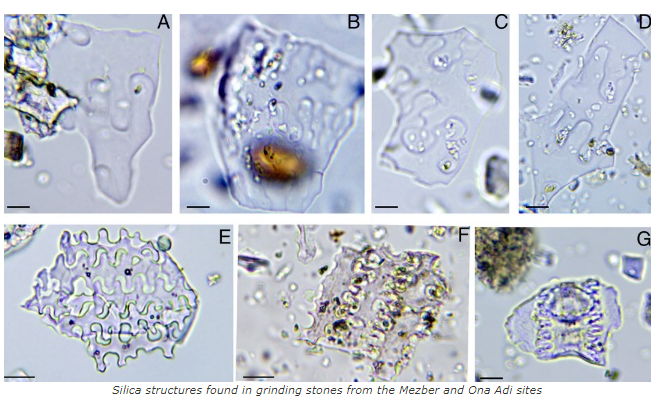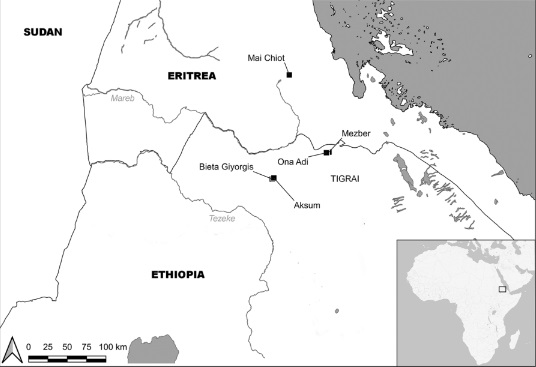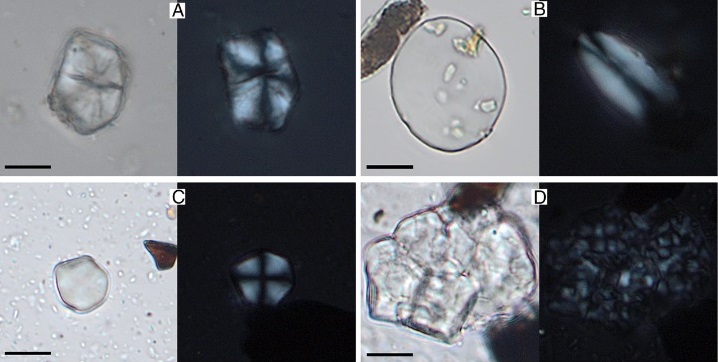New findings force us to rethink plant domestication: some 3,500 years ago millet and tubers were already consumed in the Horn of Africa
New findings force us to rethink plant domestication: some 3,500 years ago millet and tubers were already consumed in the Horn of Africa
A team led by archaeologists of the UPF CASEs group analysed microbotanical residues (starches and phytoliths) from grinding stones at two sites in Ethiopia. The research, published in PNAS, concludes that Pre-Aksumite and Aksumite societies developed complex livelihood strategies that included the consumption of domesticated and wild plants for more than 2,000 years.

Currently, the Ethiopian highlands, in north-eastern Africa, are home to a variety of domesticated plants, including grasses such as t’ef, finger millet, sorghum, and tubers such as nyam. It has been postulated that their agricultural use may have arisen in this region independently. Until now, however, no direct archaeological evidence of this process had been discovered.
Research work led by UPF recently published in the journal PNAS presents the results of the analysis of microbotanical residues (starch and phytoliths) of grinding stones recovered from two sites in the north-east of Tigray (Ethiopia), namely Mezber and Ona Adi. Together, the sites cover a time period that encompasses the earliest evidence of agriculture in the region (circa 1600 BC) to the fall of the kingdom of Aksum (circa 700 BC).
“Our results demonstrate the first evidence of the use of millets and tubers at the Horn of Africa, some 3,500 years ago, that is, more than 1,000 years earlier than previously recorded”
Abel Ruiz-Giralt, a member of the Culture, Archaeology and Socio-Ecological Dynamics Research Group (CASEs) of the UPF Department of Humanities, led a team made up of CASEs researchers (together with Carla Lancelotti and Stefano Biagetti) as well as the Simon Fraser University (Canada) and Aksum University (Ethiopia), in a study on the food systems of pre-Aksumite and Aksumite societies.
What was the process the researchers followed and what results did they obtain?

The authors collected microbotanical residues from 33 grinding stones found at the two sites analysed. They classified 2,008 starch granules, whose morphological traits can be used to identify plant type, and combined the results with analysis of plant microfossils of silica, known as phytoliths.
The results showed that at the Mezber site, multiple types of millet were used from its earliest occupation, around 1600 BC. Similarly, evidence of cereals of the C4 group has been found during the earliest occupation of the Ona Adi site, around 750 BC, whose use persisted until the settlement was abandoned around the year 700 AD.
“At both sites we find edible tubers, which suggests that the populations that inhabited them used both domesticated and wild plants as food sources for more than 2,000 years”, the researchers said. And they add: “Our results demonstrate the first evidence of the use of millets and tubers at the Horn of Africa, some 3,500 years ago, that is, more than 1,000 years earlier than previously recorded”.

Various types of starch found in Mezber and Ona Adi
A complex food system that requires a rethink
According to the archaeological study, these early agropastoral communities of the Ethiopian highlands featured mixed economies and complex food systems, including domesticated and wild cereals, as well as numerous tubers and roots. As for the plants of the C4 group, the results point to an intensive exploitation of wild species from the middle of the second millennium BC, which finally would have led to the development of domesticated forms, shortly after the beginning of the modern era.
According to the authors, these data are a significant breakthrough in the current knowledge of the Pre-Aksumite and Aksumite economies, and requires a rethink of the way of defining the cultural processes of domestication in general: “The evidence found supports the existence of a complex food system, pointing to a non-linear transition from harvesting to food production. These discoveries demonstrate the need to reconsider the phenomenon of domestication, constructing multiple, different narratives for each region, based on the new findings”, they conclude.
Reference work: Abel Ruiz-Giralt, Laurie Nixon-Darcus, A. Catherine D’Andrea, Yemane Meresa, Stefano Biagetti and Carla Lancelotti (June 2023). “On the verge of domestication: Early use of C4 plants in the Horn of Africa”. PNAS
